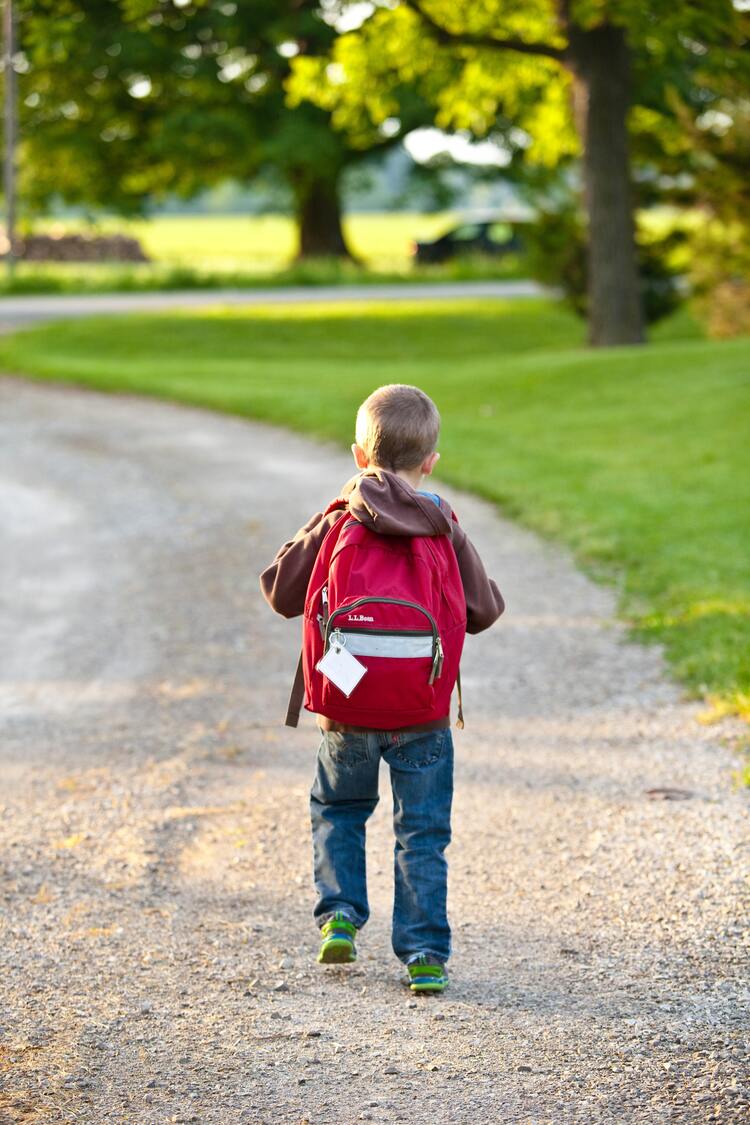Helping Young Children Adjust To School Life in September

Starting a new school (or returning to it, especially after the events of this year) is always a very exciting time for students, but it can also be scary. Walking into a strange environment with new people and without the comforts of home and family is something many children struggle with, but there are lots of ways to make it easier.
In my eight years as a Nursery Assistant and English teacher, I have picked up plenty of hints and tips to help little ones to handle this challenge.
Your school and/or class teacher may have their own strategies in place for dealing with upset students, and it’s important to always follow their policies and procedures, especially when it comes to physical contact, like hugging, restraining students (if they are
likely to hurt themselves or other people) or when supporting children with SEN.
Give them time
Of course, you want to get the class settled as soon as possible so the day can begin, but it’s important to allow upset children some time to adjust and calm down. If possible, find some space in a quiet area of the classroom (I always made sure my classroom had a corner with some comfy cushions in it, but you might use a reading corner, for example). If the child is kicking or swinging their arms, make sure that they aren’t anywhere they might hurt themselves or others.
Body language and tone of voice
Helping a distressed child isn’t easy and can be stressful, but it’s important to always remain calm and in control. Remember – you’re now their source of comfort and stability, and the more nurturing and stable you are the, quicker they’ll calm down. Get down to their level so they can read your facial expressions and look you in the eye. Speak gently but firmly, and loud enough that they can hear you if they’re crying.
Validate their feelings
Let them know that it’s OK to feel sad and a bit scared, but that they will soon feel better and that you’re there to help them. It’s important not to make a child feel silly for being upset, or that they’re acting like a baby. I sometimes found that it helped to ask a student, who had been in my class a while, to come and share their experience of how they used to feel, but now they have loads of fun.
Distraction
This can be a powerful tool if used correctly. Talk about things around the classroom, pick up a book and start looking at the pictures, wonder aloud what you might have for lunch. The child may not even be listening at first, but eventually something will catch their
attention and they’ll start to calm down. This will allow you the chance to address what’s making them sad. The distraction may only last a short while, and you may need to repeat it several times a day, but it allows the child (and your eardrums) a little break, and to realise that they can calm themselves down.
Give them some control
One of the scariest things about school is the lack of control children have in their environment. At home, they are surrounded by familiar things and people, and are most likely used to a daily routine. All that changes when they come to school – they don’t know what’s going to happen next or what’s expected of them, and most challenging of all, they don’t have their parents there to help them through it. It’s important to give them control where you can, while still being the one in charge. I found giving choices a great way to do this. “Would you like to look at a book, or sit in the cosy corner?” Let them do things at their own pace. “We’d love you to come and sit with us when you’re feeling ready.” “You’re welcome to sit next to me if it makes you feel better.”
Use past experiences
In many cases, children will have experienced separation from their parents before. This may be at nursery, having a babysitter or even at a taster session at school before term started. Once a child has calmed down enough to listen, you can use these past experiences to help them rationalise what’s happening now.
Explain
A big factor in a child’s fear is not knowing what’s going to happen next. Take the time to explain the day’s timetable, where they’ll be and what they’ll be doing. Visual cues are really helpful here. I used to stick pictures around the wall clock; a knife and fork next to the number 12 for lunchtime, a book to represent reading time at 3 o’clock, and a door next to the number 4 for home time. Children can refer to this throughout the day, and learn to follow the hour hand to see what’s coming next.
Keep parents informed, and suggest how they can help at home
A parent is your biggest ally in helping children settle into a school routine. Naturally, children will always turn to their parents first for guidance and reassurance, and their attitude can make a real difference. Update parents honestly at the end of each day, preferably
with the child present. Even if the child doesn’t contribute to the conversation, they are listening and learning, and they will know that their feelings matter. Be sympathetic but firm - don’t forget that leaving their crying child with relative strangers is incredibly difficult for a parent to do - I’ve had to console teary mums and dads more than a few times!
Get to know their interests
This may be reading their favourite book, seeing a particular friend, or even taking time to calm down on their own. Find what works and stick with it. If a child knows that they are being listened to and their choices are respected, they will soon be much happier to come to class, and you can get on with enjoying the day!
Good luck, have fun and happy learning!
